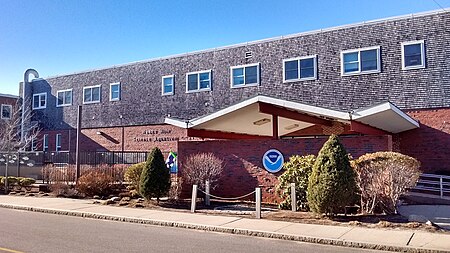Woods Hole Science Aquarium
1885 establishments in MassachusettsAquaria in MassachusettsFalmouth, MassachusettsNational Oceanic and Atmospheric AdministrationTourist attractions in Barnstable County, Massachusetts

The Woods Hole Science Aquarium (WHSA) is a small public aquarium in Woods Hole, Massachusetts, United States. It is owned by the US government and operated by the National Marine Fisheries Service and the Marine Biological Laboratory.
Excerpt from the Wikipedia article Woods Hole Science Aquarium (License: CC BY-SA 3.0, Authors, Images).Woods Hole Science Aquarium
NOAA Access Road,
Geographical coordinates (GPS) Address Nearby Places Show on map
Geographical coordinates (GPS)
| Latitude | Longitude |
|---|---|
| N 41.525833333333 ° | E -70.674166666667 ° |
Address
Woods Hole Aquarium
NOAA Access Road
02543
Massachusetts, United States
Open on Google Maps








